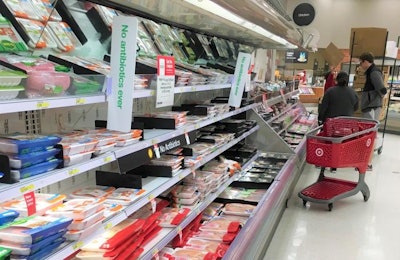
Consumer preferences are increasingly setting, or at least influencing, the agenda for everything from housing to feeding to transport to processing. Ironically, the average consumer doesn’t know much about how chicken meat winds up in their grocery store.
So, what shapes the all-important consumer’s perception of chicken and ultimately influences their decision?
A recent study conducted by Dr. Jayson Lusk, distinguished professor and head of the Department of Agricultural Economics at Purdue University, peered into the mind of the consumer and what influences their decision making process. The study, published in January 2018 and available to read here, examined what brand names, like Perdue and Tyson, and labels, like “non-GMO” “antibiotic-free” “hormone-free” “organic” and “slow growing chicken,” mean to consumers by simulating shopping using chicken packages with a variety of labels and prices.
The results
Consumers say taste, safety, and price are the most important factors considered when buying chicken. Consumers know little about broiler production – the report said only 3 percent of respondents correctly said broilers are not raised in cages – and hold erroneous beliefs about how birds are raised – 90 percent of respondents said more than 20 percent of chickens are raised with hormones.
On labels, the study said the non-GMO (genetically modified organism) and the organic labels were the most important to consumers. However, when a brand was present on the package, those labels became comparatively less important.
Focus on slow growth
The study provided some compelling takeaways surrounding slow-growing chicken. It tested consumer’s attitudes on slower-growing chicken by observing and comparing the buying decisions of consumers after they were given positive information, negative information and no additional information about slower growing chicken.
In general, consumers given no additional information “perceive slow growth labels as signaling lower safety, health and taste.” Furthermore, the study said the willingness to pay for slow growth chicken is highly dependent on the information provided, "suggesting consumers do not have a high degree of knowledge or well-formed preferences for the attribute.” However, the shopping simulation showed chicken with a slow growth label could pick up significant market share even at $0.50 to $1 per pound more than conventional chicken.
Implications for the broiler industry
The study said the future of the slow growth market is uncertain and the knowledge of the product is low. The willingness to pay a premium for it as well as the importance of the attribute is generally lower than other label claims. This is unequivocally good news for the industry.
With this in mind, the time to inform consumers about the consequences of switching to slower growing genetics is now. The chicken industry is already digging in, as it should, and pointing out the ghastly economic and ecological consequences of a large-scale adoption of slower growing genetics. It’s necessary because the consumer is currently uniformed and highly susceptible to either positive or negative information about the product.
Animal activist groups, and organizations pursuing their agenda, will continue to prioritize the genetics issue and relentlessly promote slower growing chicken’s supposed benefits over conventional chicken. Companies will keep signing onto activist-driven welfare pledges and then market those welfare claims as an added value over competitor’s products.
Now, the advantage belongs to the industry because of the better price and the lack of knowledge consumers possess about slower growing chickens. But, the activists are savvy and they will erode this lead in leaps and bounds if they can. The industry must press its advantage on slow growing genetics now, or risk losing it for good.


















